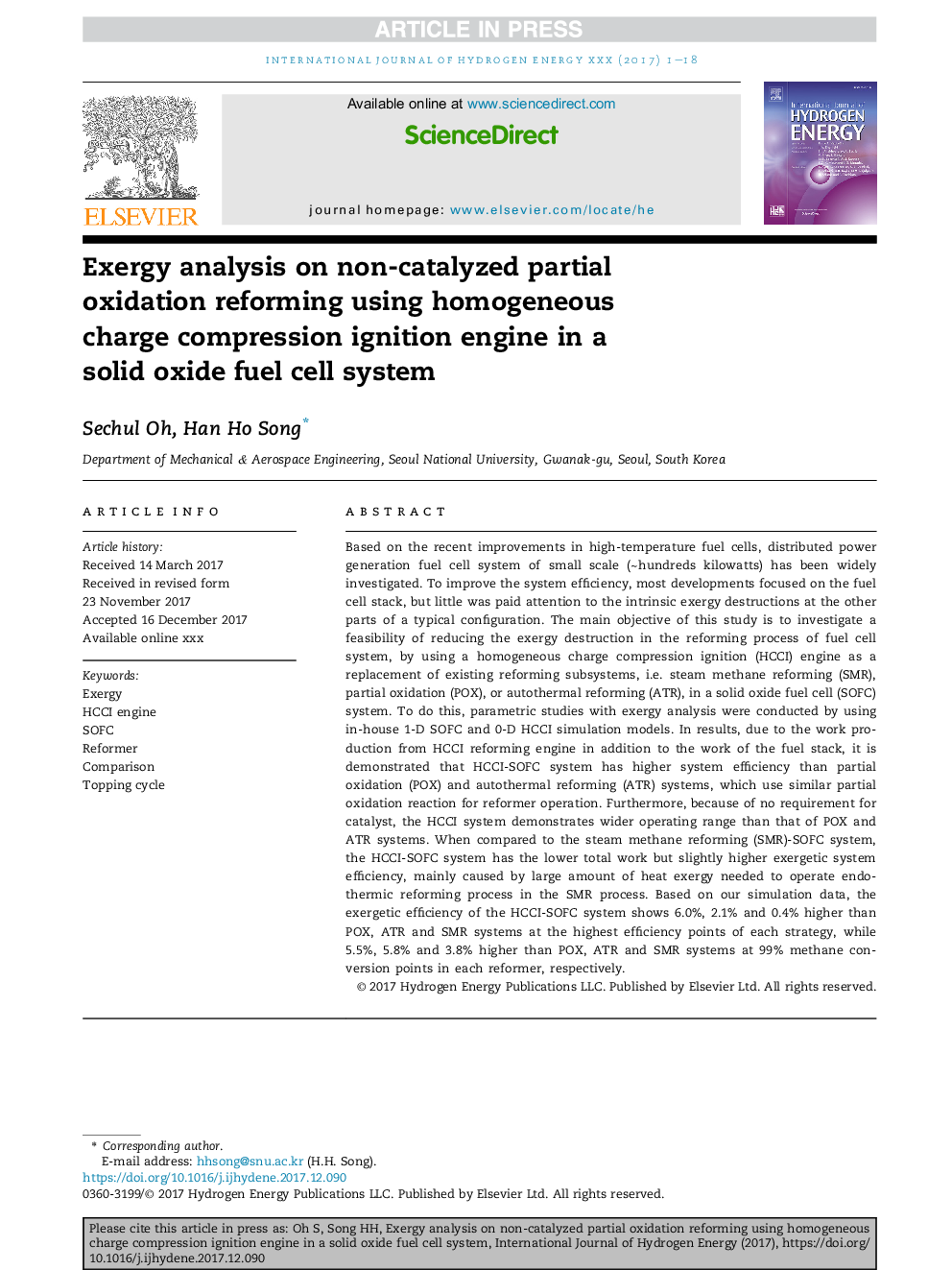| Article ID | Journal | Published Year | Pages | File Type |
|---|---|---|---|---|
| 7708086 | International Journal of Hydrogen Energy | 2018 | 18 Pages |
Abstract
Based on the recent improvements in high-temperature fuel cells, distributed power generation fuel cell system of small scale (â¼hundreds kilowatts) has been widely investigated. To improve the system efficiency, most developments focused on the fuel cell stack, but little was paid attention to the intrinsic exergy destructions at the other parts of a typical configuration. The main objective of this study is to investigate a feasibility of reducing the exergy destruction in the reforming process of fuel cell system, by using a homogeneous charge compression ignition (HCCI) engine as a replacement of existing reforming subsystems, i.e. steam methane reforming (SMR), partial oxidation (POX), or autothermal reforming (ATR), in a solid oxide fuel cell (SOFC) system. To do this, parametric studies with exergy analysis were conducted by using in-house 1-D SOFC and 0-D HCCI simulation models. In results, due to the work production from HCCI reforming engine in addition to the work of the fuel stack, it is demonstrated that HCCI-SOFC system has higher system efficiency than partial oxidation (POX) and autothermal reforming (ATR) systems, which use similar partial oxidation reaction for reformer operation. Furthermore, because of no requirement for catalyst, the HCCI system demonstrates wider operating range than that of POX and ATR systems. When compared to the steam methane reforming (SMR)-SOFC system, the HCCI-SOFC system has the lower total work but slightly higher exergetic system efficiency, mainly caused by large amount of heat exergy needed to operate endothermic reforming process in the SMR process. Based on our simulation data, the exergetic efficiency of the HCCI-SOFC system shows 6.0%, 2.1% and 0.4% higher than POX, ATR and SMR systems at the highest efficiency points of each strategy, while 5.5%, 5.8% and 3.8% higher than POX, ATR and SMR systems at 99% methane conversion points in each reformer, respectively.
Related Topics
Physical Sciences and Engineering
Chemistry
Electrochemistry
Authors
Sechul Oh, Han Ho Song,
